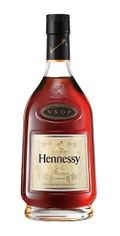Cognac

Named after the city in France, is a kind of brandy, which must be produced in the region around the town of Cognac and aged in oak barrels in order to be called cognac.
A related drink produced in another region is Armagnac.
Regional and Legal Standards
The region of Cognac, divided up into six growth areas, or 'crus', covers the department of Charente-Maritime, a large part of the Charente and a few areas in Deux-Sèvres and the Dordogne. The six crus are in order of appreciation of the Cognacs coming from them: Grande Champagne, Petite Champagne, Borderies, Fins Bois, Bons Bois, and Bois Ordinaires.
A cognac made from just the first two of these crus (with at least 50% from Grande Champagne) is called 'Fine Champagne' cognac, although no cognac has anything to do with the sparkling wine champagne.
If a brandy is produced that fails to meet any of the strict criteria set down by the 'governing body' of cognac, the BNIC - Bureau National Interprofessionel du Cognac, may not be called cognac, nor sold as such.

- It must be produced within the delimited region, from wine using certain grape varieties;
- It must be obtained through double distillation, in typical Charentais stills;
- It must age in oak barrels, which give it its color and part of its taste.
Many of the cognac producers in the town allow visitors to taste their product, the bigger companies have guided tours.
Production Process
Cognac is made from 'eau de vie' (literally, water of life) produced by double distilling the white wines produced in any of the growth areas. The wine is a very dry, thin wine, not really suitable for drinking, but excellent for distillation. It may only be made from a strict list of grape varieties. Distillation takes place in traditionally shaped Charentais copper stills, the design and dimensions of which are also controlled. Two distillations must be carried out; the resulting eau de vie is a colorless spirit of about 70% alcohol.
Cognac may not be sold to the public unless it has been aged for at least two years, counting from the end of the period of distillation (1st April following the year the grapes were harvested).
During the aging, a large percentage of the alcohol in the eau de vie evaporates through the porous oak barrels. This is termed locally as the 'part des anges', or angels' share. A black fungus, torula compniacensis richon thrives on the alcoholic vapours and normally grows on the walls of the aging cellars.

The final product is diluted to 40% alcohol content (80 proof). 7 The age of the Cognac is shown as that of the youngest eau de vie used in the blend. The blend is usually of different ages and from different local areas. This blending, or marriage of different eau de vie is important to obtain a complexity of taste absent from an eau de vie from a single distillery or vineyard. Each cognac house has a master taster (maître de chais) who is responsible for creating this delicate blend of spirits, so that the cognac produced by a company today will taste identical to a cognac produced by that same company 50 years ago, or in 50 years' time.
Grades Include
- VS (Very Special) or *** (three stars), where the youngest brandy is stored at least 2 years in cask.
- VSOP (Very Superior Old Pale), Réserve, where the youngest brandy is stored at least 4 years in cask.
- XO (Extra Old), Napoléon, Hors d'Age, where the youngest brandy is stored at least 7 years in cask.
Brands
- Braastad
- Courvoisier
- Hennessy
- Rémy Martin
Companies
Cognac is mainly sold by trading houses. Some of them where founded centuries ago and still ruling the market.

- Allied Domecq
- LVMH
- Hennessy
- Martell
- Courvoisier
- Rémy Martin
- Otard
- Camus
- Hine
- Delamain

Literature
Lists of Cognac literature can be found on the following pages:
- cognac.net books page
- Literature page detailed list with cover pictures (in German, translation by yahoo)
External Links
- Page by the American Cognac-lover Mac A. Andrew who died in 2001. Adopted by le-cognac.com. No longer updated.
- Page by Amélie and Chantal Firino-Martell with links to many Cognac-manufacturers and very informative. Also a Shop with cognac.
- Page by Jean-Louis Née, constantly updated news about everything related to Cognac.
- English page by Ralph Wagner with information and forum pertaining to Cognac.
- BNIC Page of the Bureau National Interprofessionnel du Cognac, the authority guarding the manufacturing of all Cognac.
Cognac Based Drinks
- Grand Marnier
- Pineau de Charentes - A sweet, ou bien moelleux, White wine made in the region, Charentes